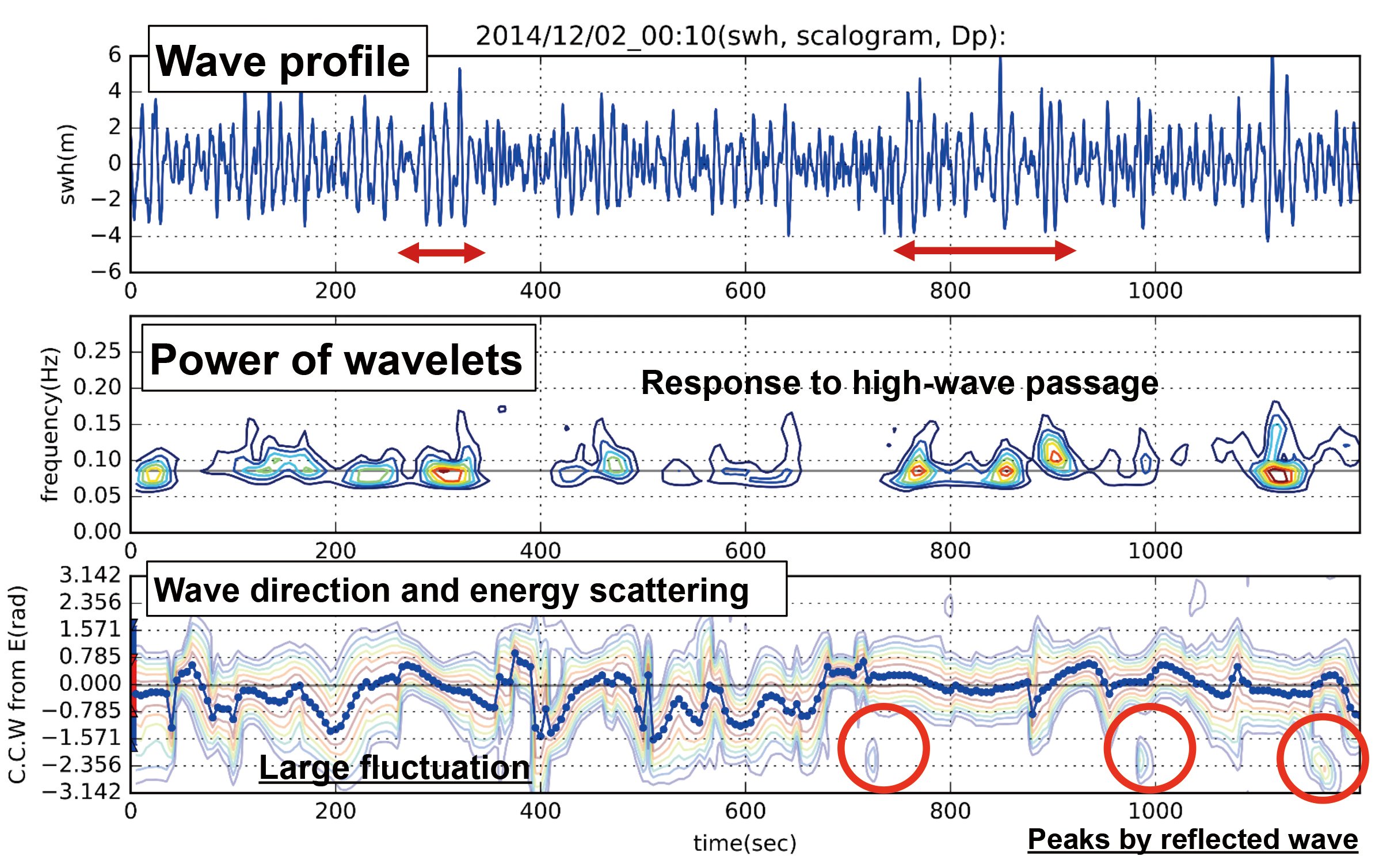Major Research The dependence of sea-surface roughness on the wavenumber spectrum in inner bays
In the previous storm-surge simulation, sea-surface roughness was calculated using only a wind-velocity function regardless of wave conditions. To quantify the relationship between wave conditions and sea-surface roughness, a method of estimating wavenumber spectrum needs to be developed.
Therefore, in this study, we assumed that data of Acoustic Doppler Current Profile (ADCP), which is a general observation method in the Nationwide Ocean Wave information network for Ports and HArbourS (NOWPHAS), will be used in the estimation, and then attempted to develop a method to estimate wavenumber spectrum based on wavelet analysis.
First, we received advice from Dr. M. Donelan of Miami University, investigated a method of using longitudinal data of observed water levels and velocities to directly estimate wavenumber spectrum, and then concluded that such a method is difficult to use due to ADCP's characteristics. Next, we used research by Krogstad et al. (2006) as a reference, and investigated a two-stage method, in which directional-spectrum estimation is followed by wavenumber-spectrum estimation. In the directional-spectrum estimation, we adopted the Bayesian approach, which allows robust and high-resolution estimation; in the wavenumber-spectrum estimation, we adopted the grid search algorithm which assumes a linear dispersion relation as the initial value. We verified the validity of this serial estimation method through a numerical simulation, in which water-level/flow-velocity time series were made using the wavenumber spectrum, then the time series was used to inversely calculate the wavenumber spectrum.
Phenomena which fluctuate depending on time domains (e.g. envelope development in wave-group) could not be analyzed by Fourier analysis, but could be analyzed by introducing the wavelet analysis to spectral analysis. Dropping data and noises seldom interfere with such analysis.
After analyzing some data from NOWPHAS-based observations using the above method, we found that the time fluctuation of directional spectrum may differ depending on winds, waves. We also determine the timing and frequency of reflected-wave development from the land.

Example of wavenumber spectrum



